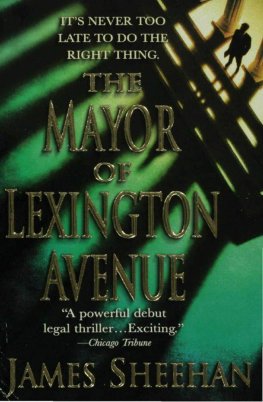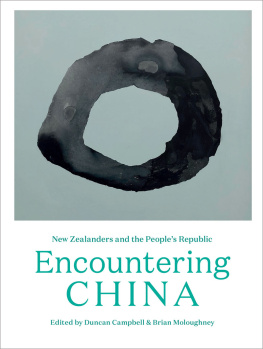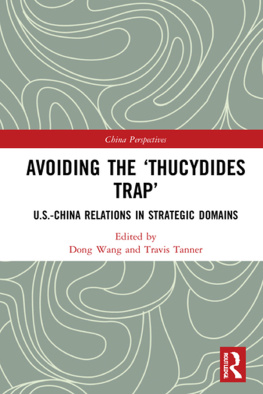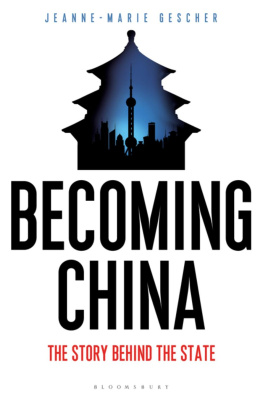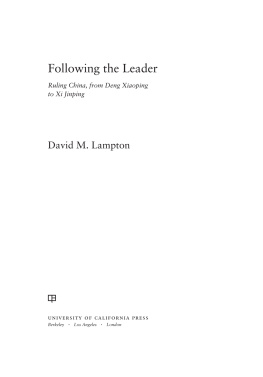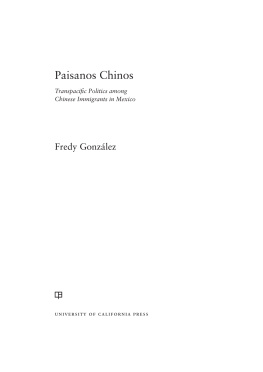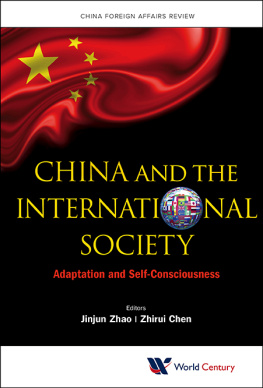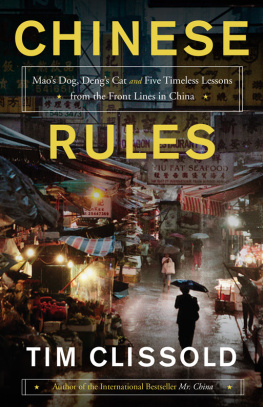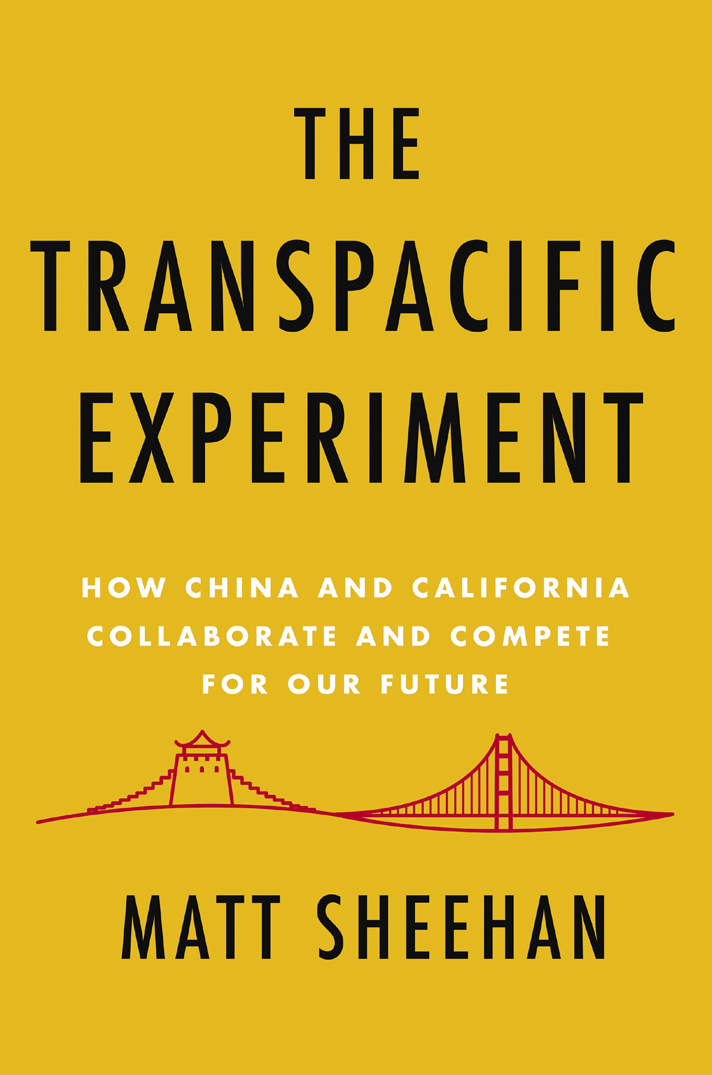Table of Contents
Guide
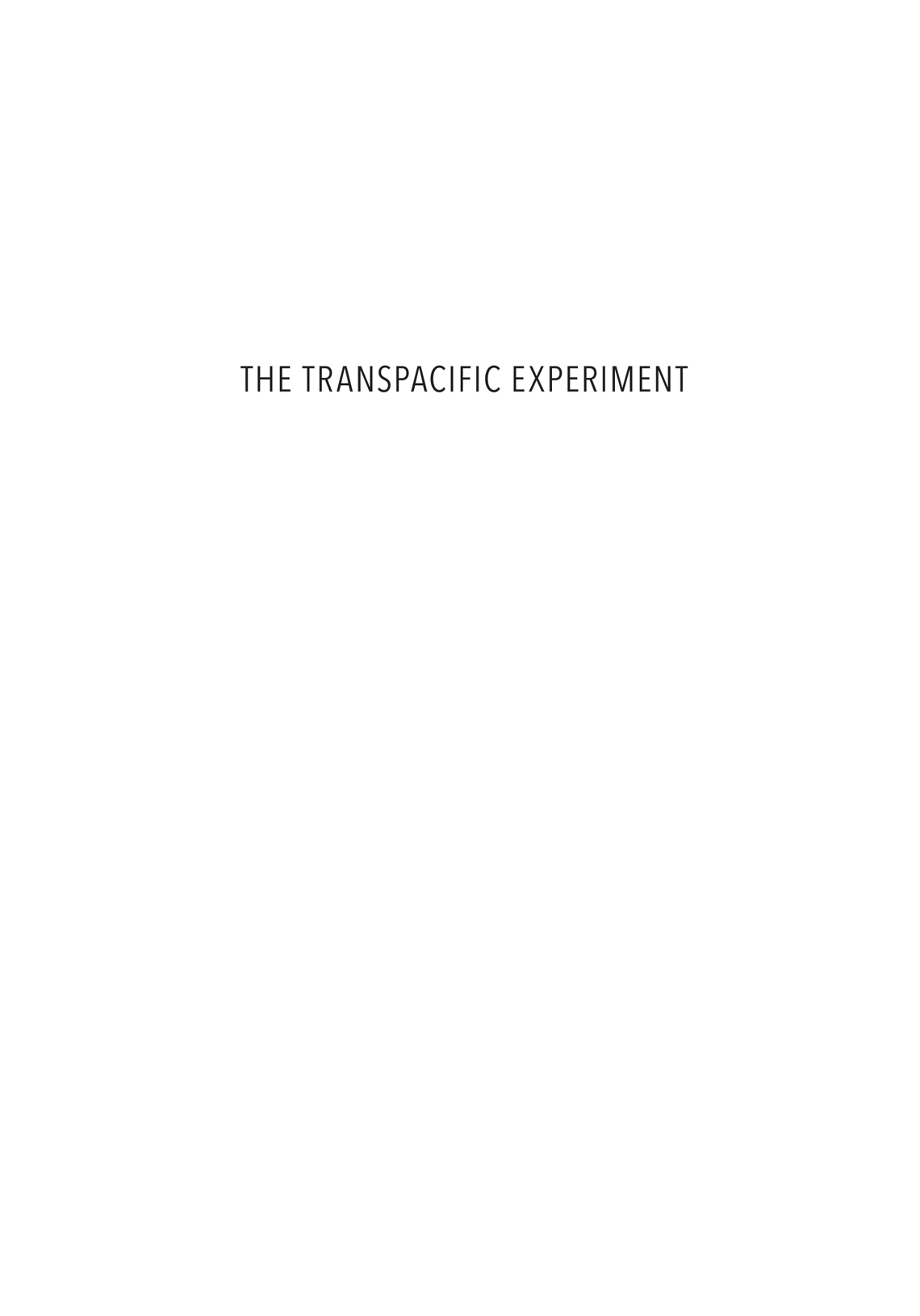


The Transpacific Experiment
Copyright 2019 by Matthew Sheehan
First hardcover edition: 2019
All rights reserved under International and Pan-American Copyright Conventions. No part of this book may be used or reproduced in any manner whatsoever without written permission from the publisher, except in the case of brief quotations embodied in critical articles and reviews.
To explore photos, videos, and interactive graphics related to this book, visit transpacificexperiment.com.
ISBN: 978-1-64009-214-3
The Library of Congress Cataloging-in-Publication Data is available.
Jacket design by Sarah Brody
Book design by Jordan Koluch
COUNTERPOINT
2560 Ninth Street, Suite 318
Berkeley, CA 94710
www.counterpointpress.com
Printed in the United States of America
Distributed by Publishers Group West
10 9 8 7 6 5 4 3 2 1
TO ALL OF MY TRANSPACIFIC FAMILYYOU KNOW WHO YOU ARE
The old frontiersman lost his horsehow to know its not a blessing?
CHINESE PROVERB

N estled against the western shores of the San Francisco Bay, Angel Island is both a monument to the past and a window into the future of the worlds two most powerful countries. On the northeast corner of the island lies the Immigration Station, a relic of the Chinese Exclusion Act of 1882. That act of Congress was the capstone to the first era of major face-to-face engagement between Chinese and American people. California was the stage on which these two groups made their first introductions and impressions. They didnt exactly hit it off.
After the discovery of gold in 1849, tens of thousands of Chinese men made landfall in San Franciscoa city they called Gold Mountain. Fleeing famine at home and dreaming of rivers running with precious metals, these men left their villages in southern China and clambered onto wooden ships that would carry them across the Pacific. In California they dug for nuggets, cooked for cash, and earned a reputation as cheap but extremely valuable laborers. When Leland Stanford and his fellow robber barons set out to build the western segment of the transcontinental railroad, they enlisted Chinese workers for the most crucial and the most dangerous tasks.
But these men entered an America rife with economic anxiety and racial resentment. To Irish laborers in San Franciscomen like my great-great-grandfatherthese Chinese arrivals were seen as a threat to their jobs and an affront to their identity. Newspapers and dime novels spread fears of a yellow peril descending on American shores. Demagogues thrived, blaming the new Chinese arrivals when banking crises dragged down the American economy. Thugs carried out lynchings at Chinese labor camps, and Californias own governor demanded that Congress check this tide of Asiatic immigration.
Those clamoring for a law excluding Chinese laborers sparred with men like Wong Chin Foo, a naturalized American citizen who became one of the most outspoken defenders of Chinese rights.
As residents of the United States, we claim a common manhood with all other nationalities, Wong wrote in 1893, and believe we should have that manhood recognized according to the principles of common humanity and American freedom.
But those principled appeals largely fell on deaf ears among white immigrants resentful of the new competition. My own great-great-grandfather arrived in San Francisco in the 1870s, working at the Pacific Rolling Mill and living in a tough part of town known as Irish Hill. Our family doesnt have any record of him participating in anti-Chinese activity, but he certainly fit the demographic profile: a working-class Irish Catholic immigrant laborer, scratching to carve out his space in a new city and country.
His son and my great-grandfather, Tommy Sheehan, was born in San Francisco in 1879, three years before the Chinese Exclusion Act became law. Orphaned at a young age, Tommy grew up in Saint Vincents Home for Boys and went on to become a San Francisco longshoreman and union organizer. In that role, he befriended Peter C. Yorke, a priest and vocal advocate for Irish laborers. Tommy used to drive Yorke around the city on weekends, smoking cigarettes and talking shop. In our family, Yorke is remembered as a righteous defender of the working man. But he did not extend that empathy to Chinese laborers. Keynoting the 1901 California Chinese Exclusion Convention, Yorke railed against Chinese people who remained in the country during the exclusion era.
We are face-to-face with an immigration which is emphatically not Christian, Yorke told the crowd. Their thoughts are not our thoughts; their blood is not our blood; their outlook is not our outlook.
Four years after that speech, construction began on the Angel Island Immigration Station, where thousands of Chinese people looking to make a home in California would be held. One of the few exceptions in the Chinese Exclusion Act allowed for children and spouses of Chinese people in America to follow their relatives over. The Immigration Station hosted interrogations designed to separate out true blood relatives from paper sonspeople who would claim a false familial relation in order to enter the country.
Immigration officials would have new arrivals draw their family trees and maps of their home villages. Virtually all Chinese laborers in the U.S. were recruited from just a handful of counties in the south of China near Hong Kong, allowing immigration officials to cross-reference these diagrams with those drawn by earlier immigrants, attempting to weed out the paper sons in the process. Detentions could go on for weeks or even months. Some were finally granted entry to the country; others were sent back across the Pacific.
Thousands of miles from home but barred from San Franciscos shores, the Chinese prisoners carved poems into the wooden walls of the Immigration Station, engravings that you can still see there today.
America has power, but not justice.
In prison, we were victimized as if we were guilty.
Given no opportunity to explain, it was really brutal.
I bow my head in reflection but there is
nothing I can do.
THE TRANSPACIFIC PANORAMA
Today, Angel Island offers a panoramic view of a new transpacific reality, one being forged by the new era of large-scale face-to-face engagement between Chinese and American people. The surrounding landscape is where the worlds two superpowers are getting reacquainted with one another at ground level in the twenty-first century. For a window into that process at work, we just need to take a short walk south from the Immigration Station.
Exiting through the front door of the building, hang a right, and head south along the islands paths for about a mile. Reaching the shore, scramble out to Point Blunt, at the southeast corner of the island. These boulders offer up a sweeping view of the Bay Area: Berkeley and Oakland to the east, Treasure Island in the middle of the Bay, and San Francisco to the west. If the fog hasnt rolled in, you can just barely catch glimpses of Silicon Valley in the distance to the south.
Next page

